
Gustave Caillebotte Painting Reproductions 2 of 4
1848-1894
French Impressionist Painter
89 Caillebotte Paintings
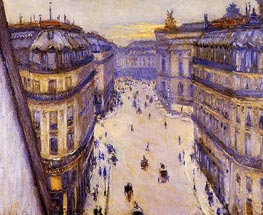
Rue Halevy, Seen from the Sixth Floor 1878
Oil Painting
$911
$911
SKU: GUC-522
Gustave Caillebotte
Original Size: unknown
Private Collection
Gustave Caillebotte
Original Size: unknown
Private Collection

Orange Trees 1878
Oil Painting
$898
$898
Canvas Print
$71.12
$71.12
SKU: GUC-523
Gustave Caillebotte
Original Size: 154.9 x 116.8 cm
Museum of Fine Arts, Houston, USA
Gustave Caillebotte
Original Size: 154.9 x 116.8 cm
Museum of Fine Arts, Houston, USA
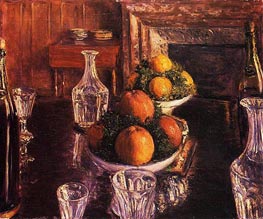
Still Life 1879
Oil Painting
$561
$561
SKU: GUC-524
Gustave Caillebotte
Original Size: unknown
Private Collection
Gustave Caillebotte
Original Size: unknown
Private Collection

Interior, Woman Reading 1880
Oil Painting
$898
$898
Canvas Print
$92.85
$92.85
SKU: GUC-525
Gustave Caillebotte
Original Size: 65 x 80 cm
Private Collection
Gustave Caillebotte
Original Size: 65 x 80 cm
Private Collection
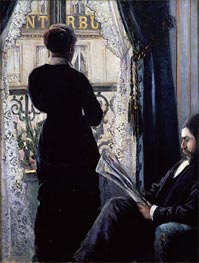
Interior, Woman at the Window 1880
Oil Painting
$911
$911
Canvas Print
$70.62
$70.62
SKU: GUC-526
Gustave Caillebotte
Original Size: 116 x 89 cm
Private Collection
Gustave Caillebotte
Original Size: 116 x 89 cm
Private Collection
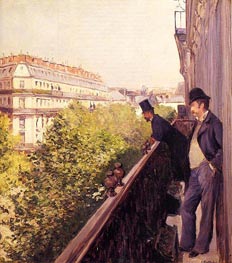
Balcony, Boulevard Haussmann 1880
Oil Painting
$736
$736
Canvas Print
$81.34
$81.34
SKU: GUC-527
Gustave Caillebotte
Original Size: 69 x 62 cm
Thyssen-Bornemisza Museum, Madrid, Spain
Gustave Caillebotte
Original Size: 69 x 62 cm
Thyssen-Bornemisza Museum, Madrid, Spain
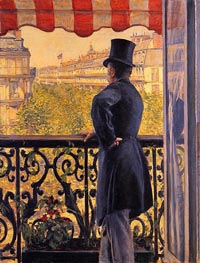
The Man on the Balcony 1880
Oil Painting
$936
$936
SKU: GUC-528
Gustave Caillebotte
Original Size: unknown
Private Collection
Gustave Caillebotte
Original Size: unknown
Private Collection
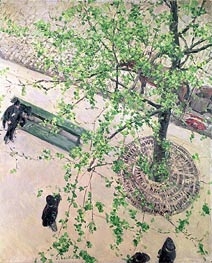
Boulevard seen from Above 1880
Oil Painting
$325
$325
Canvas Print
$76.40
$76.40
SKU: GUC-529
Gustave Caillebotte
Original Size: 65 x 54 cm
Private Collection
Gustave Caillebotte
Original Size: 65 x 54 cm
Private Collection
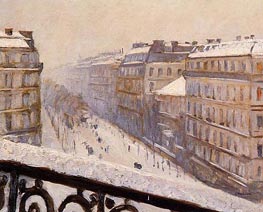
Boulevard Haussmann, Snow c.1880
Oil Painting
$591
$591
SKU: GUC-530
Gustave Caillebotte
Original Size: unknown
Private Collection
Gustave Caillebotte
Original Size: unknown
Private Collection
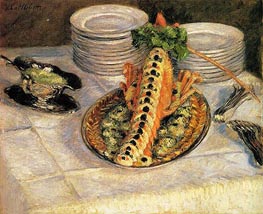
Still Life with Crayfish c.1880/82
Oil Painting
$811
$811
Canvas Print
$75.04
$75.04
SKU: GUC-531
Gustave Caillebotte
Original Size: 58 x 72 cm
Private Collection
Gustave Caillebotte
Original Size: 58 x 72 cm
Private Collection
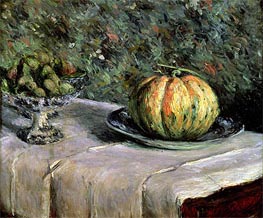
Melon and Fruit Bowl with Figs c.1880/82
Oil Painting
$325
$325
Canvas Print
$95.11
$95.11
SKU: GUC-532
Gustave Caillebotte
Original Size: unknown
Private Collection
Gustave Caillebotte
Original Size: unknown
Private Collection
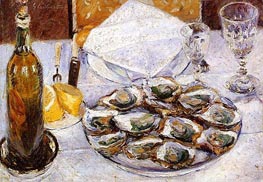
Still Life with Oysters 1881
Oil Painting
$695
$695
Canvas Print
$64.43
$64.43
SKU: GUC-533
Gustave Caillebotte
Original Size: 38 x 54.8 cm
Private Collection
Gustave Caillebotte
Original Size: 38 x 54.8 cm
Private Collection
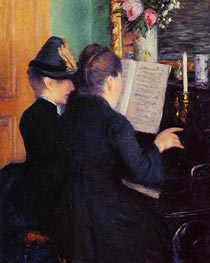
The Piano Lesson 1881
Oil Painting
$898
$898
SKU: GUC-534
Gustave Caillebotte
Original Size: unknown
Barnes Foundation, Merion, USA
Gustave Caillebotte
Original Size: unknown
Barnes Foundation, Merion, USA
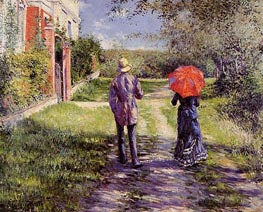
Rising Road 1881
Oil Painting
$898
$898
SKU: GUC-535
Gustave Caillebotte
Original Size: unknown
Private Collection
Gustave Caillebotte
Original Size: unknown
Private Collection
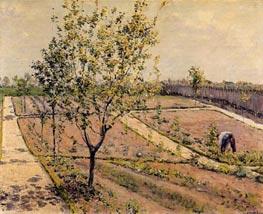
Kitchen Garden, Petit Gennevilliers 1882
Oil Painting
$339
$339
SKU: GUC-536
Gustave Caillebotte
Original Size: unknown
Private Collection
Gustave Caillebotte
Original Size: unknown
Private Collection

The Basin at Argenteuil c.1882
Oil Painting
$591
$591
SKU: GUC-537
Gustave Caillebotte
Original Size: unknown
Private Collection
Gustave Caillebotte
Original Size: unknown
Private Collection
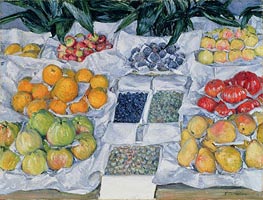
Fruit Displayed on a Stand c.1881/82
Oil Painting
$950
$950
Canvas Print
$70.44
$70.44
SKU: GUC-538
Gustave Caillebotte
Original Size: 76.5 x 100.6 cm
Boston Museum of Fine Arts, Massachusetts, USA
Gustave Caillebotte
Original Size: 76.5 x 100.6 cm
Boston Museum of Fine Arts, Massachusetts, USA
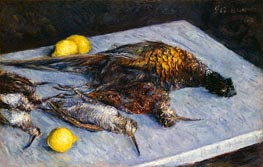
Game Birds and Lemons 1883
Oil Painting
$852
$852
Canvas Print
$61.75
$61.75
SKU: GUC-539
Gustave Caillebotte
Original Size: 50.8 x 81.3 cm
Springfield Museum of Art, Ohio, USA
Gustave Caillebotte
Original Size: 50.8 x 81.3 cm
Springfield Museum of Art, Ohio, USA
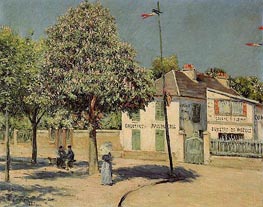
The Argenteuil Promenade 1883
Oil Painting
$882
$882
SKU: GUC-540
Gustave Caillebotte
Original Size: 65 x 82 cm
Private Collection
Gustave Caillebotte
Original Size: 65 x 82 cm
Private Collection

The Argenteuil Bridge and the Seine c.1883
Oil Painting
$882
$882
Canvas Print
$74.19
$74.19
SKU: GUC-541
Gustave Caillebotte
Original Size: 65 x 82 cm
Museum Barberini, Potsdam, Germany
Gustave Caillebotte
Original Size: 65 x 82 cm
Museum Barberini, Potsdam, Germany
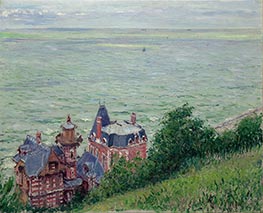
Villas at Trouville 1884
Oil Painting
$771
$771
Canvas Print
$75.72
$75.72
SKU: GUC-542
Gustave Caillebotte
Original Size: 66 x 81.3 cm
Cleveland Museum of Art, Ohio, USA
Gustave Caillebotte
Original Size: 66 x 81.3 cm
Cleveland Museum of Art, Ohio, USA
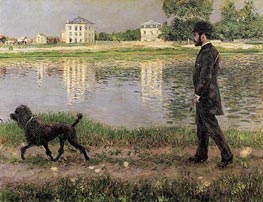
Richard Gallo and His Dog, at Petit Gennevilliers 1884
Oil Painting
$898
$898
Canvas Print
$71.46
$71.46
SKU: GUC-543
Gustave Caillebotte
Original Size: 89 x 116 cm
Private Collection
Gustave Caillebotte
Original Size: 89 x 116 cm
Private Collection

Norman Landscape 1884
Oil Painting
$546
$546
SKU: GUC-544
Gustave Caillebotte
Original Size: unknown
Private Collection
Gustave Caillebotte
Original Size: unknown
Private Collection
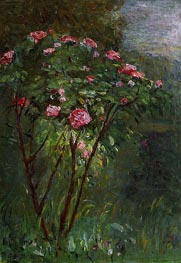
Rose Bush in Flower 1884
Oil Painting
$561
$561
SKU: GUC-545
Gustave Caillebotte
Original Size: unknown
Private Collection
Gustave Caillebotte
Original Size: unknown
Private Collection